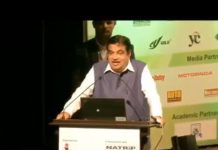FORGOTTEN CITIZENS 1984, SEEKING JUSTICE, a travelling photography exhibition initiated by senior advocate HS Phoolka, commemorated 28 years of the 1984 anti-Sikh riots. Arpana Caur, 58, artist and one of the organisers, tells Aradhna Wal about the need for public intervention in cases of marginalisation of minorities and how art must record history to prevent atrocities from happening again.
EDITED EXCERPTS

The project is called Forgotten Citizens Seeking Justice. What is being recalled?
I knew of this senior advocate, HS Phoolka, who had been fighting nearly 100 cases related to the 1984 Sikh riots for 28 years. Two years ago, I met him at an environment conference. This exhibition came about when he realised, with only four cases left, that he had only been dealing with words and that there was no visual impact. People gave up out of exhaustion and lack of initiative. Eyewitnesses died. So Phoolkaji called some of us and said that we need to draw public attention to this. He, together with the Bachpan Bachao Andolan, Lok Raj Sangathan and a handful of young volunteers, put together the exhibition.
How can art agitate for justice?
The photographers who captured the riots are eyewitnesses. Ram Rahman was there in Trilokpuri and Sondeep Shankar worked for The Telegraph then. Phoolkaji had 30 images with him already. Ram visited Trilokpuri, especially Block 32 where 400 men — the poorest of the poor carpenters, rickshawallas — had been killed. He had an image of a mother holding the finger of her son. The rioters had cut off the finger to remove the ring after burning the body. Phoolkaji felt that a travelling exhibition was needed to remind people that this happened, so that it doesn’t happen again. It seemed appropriate to start with Jallianwala Bagh.
‘The exhibition has caused people in different cities to break down. This isn’t driven by anger; it’s a plea for justice’

Photo: Ashok Vahie
What has dominated your memories of the 1984 riots?
I have vivid memories of living with my mother in a rented house in Niti Bagh. Our landlord was a Supreme Court lawyer and a member of the Rajya Sabha. During the riots, he approached the court and said that a prominent sardarni (my mother) was his tenant; hence his house was in danger. The court ordered us to vacate in six months. We were without a home, and had to stay in a friend’s drawing room for six months.
We were two women helpless in front of a powerful man. That’s when you realise how much of a minority you are. From a friend’s balcony I could see the smoke rising from the burnt shops in South Extension in Delhi. I knew a man, all of 5 feet, nothing with a squeaky voice, who used to give me rides to the studio on his motorbike. He and his children were killed. By the time we got to his place to save his wife, she had lost her mind. I worked in the relief camps later, and can’t even describe the suffering I saw there. You can’t call these riots. In a riot, two sides clash. This was a plain and simple massacre.

Photo: Ashok Vahie
The campaign includes a petition to the government for proper investigation and legal action. Has there been a response to that?
Art here is used as a tool for recording memories. Teesta Setalvad’s activism for the Gujarat riots, using art and photography, has been an eye-opener. The judgement set a precedent and bolstered Phoolkaji’s initiative. If there is protest, if there is media support, then maybe something can happen. The exhibition has caused people in different cities to break down. This isn’t driven by anger; it’s a plea for justice. As for the legal response, only time will tell.
‘Rahman had an image of a mother holding the finger of her son. The rioters had cut it off to remove the ring after burning the body’
What has been your own response as a Sikh?
I, like all Sikhs in 1984, felt marginalised. Your sense of belonging gets destroyed. The men who killed Mrs Gandhi deserved punishment, but not the innocent poor on the streets. Why wasn’t the Army called in on time? Sikhs have always been a large part of the Indian Army and sacrificed so much for it because they saw themselves as Indians first. Such marginalisation creates a feeling of insecurity. All these tarkhans, who earned Rs 100-200 a day, lost their lives. They were the easy victims. The rich people in South Delhi were only looted. But the poor lost their lives. And that is sick.
 Photo: Sandeep Shankar |
 Photo: Ram Rahman |
In Rwanda, they say forgetting a past atrocity is the best way to move on. As a culture we memorialise and archive our collective tragedies. What is the wisdom of either course?
I saw an exhibition on the Rwanda genocide in Germany. A white artist had done a lot of work on it. The site he chose was a gas chamber where Jews were killed. It is important to remember. People are helpless in front of mobs. But if there is media awareness, if there is justice, perhaps it won’t happen again. Otherwise, our country is a tinderbox waiting to be lit up.
Aradhna Wal is a Sub Editor with Tehelka.
aradhna@tehelka.com













